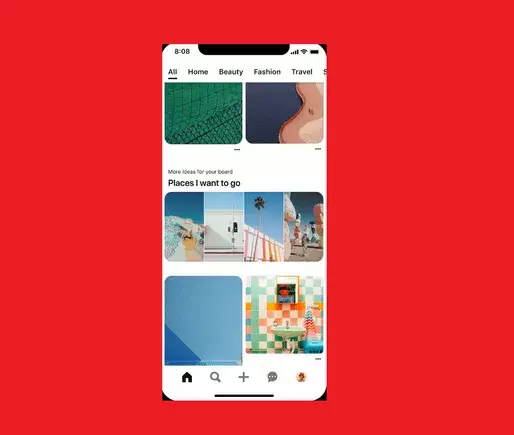In the constantly evolving digital landscape, platforms must continually innovate to maintain user interest and drive engagement. Pinterest has recently introduced innovative full-width modules to its feed, which serve as an exciting development that promises to enhance the user experience significantly. This article dives into the intricacies of these modules and what they mean for Pinterest users and marketers alike.
Pinterest’s latest feature comes in the form of two distinct module types: landing page modules and carousel modules. Each caters to specific engagement strategies, enabling users to interact with a more diverse array of content without overwhelming the primary feed with extraneous information. The landing page modules redirect users to a dedicated page filled with Pins related to their interests, essentially creating a focused exploration space where users can immerse themselves further. In contrast, the carousel modules present a horizontal selection of Pins that users can swipe through, providing a quick yet engaging way to discover new content.
This strategy is not just an aesthetic enhancement; it is designed to create a more dynamic and engaging experience that capitalizes on Pinterest’s core functionality as a visual discovery platform. By encouraging users to dive deeper into specific topics, Pinterest is fostering not only longer engagement times but also a more personalized browsing experience.
Smart Engagement: Tailoring Content to Users
What makes these modules particularly intriguing is the personalized approach Pinterest is taking in their deployment. Rather than flooding all users with these modules, Pinterest implements a sophisticated algorithm to tailor the feed according to user behavior. If a user shows no interest in a particular module after several impressions, Pinterest will temporarily hide that module. This responsive strategy is critical; it means that the platform respects the user’s preferences while simultaneously encouraging exploration of new ideas tailored to their interests.
The premise lies in a daily assessment of user interaction data—you can think of it as Pinterest’s method of crafting a personalized experience that is sensitive to user engagement levels. By continuously refining what users see based on their historical interactions, Pinterest aims to ensure that the content remains relevant, engaging, and contributes positively to the overall browsing experience. This nuanced control can yield impressive benefits for marketers as they seek to understand what resonates with the audience.
The Dynamic Dance of Pins and Modules
Pinterest’s strategic deployment of its new module types raises vital questions about user engagement and content hierarchy. Initially, the modules were placed in fixed slots, which risked disrupting users’ natural feed flow—potentially substituting high-engagement Pins with low-performing modules. However, Pinterest has recalibrated this approach by integrating a ‘skip slot’ methodology that ensures modules dynamically replace Pins based on predicted user engagement levels. This method represents a significant shift in how Pinterest curates its content.
The implications for marketers are manifold. They must now consider how their Pins align with these new module types when strategizing for visibility in a more saturated feed. The awareness that a well-placed Pin might be obscured or enhanced by a module offers a nuanced challenge. Marketers can no longer rely solely on improved visuals and descriptions; they must be cognizant of the broader ecosystem in which their content resides.
Redefining Visual Discovery
Ultimately, Pinterest’s new module system may redefine what it means to discover content visually. The site is shifting towards creating a more fluid experience—one that caters to both exploration and engagement. This transformation enhances not just user experience but also offers fresh avenues for brands to connect with their target audiences.
The introduction of these modules is a call to action for marketers and content creators to rethink their strategies on the platform. Understanding how to leverage these new features can lead to increased visibility and engagement, turning casual browsers into dedicated followers. As Pinterest continues to innovate, the opportunities for creative marketing strategies expand even further, making it an exhilarating time for both users and brands on this visual-centric platform.


Leave a Reply
You must be logged in to post a comment.